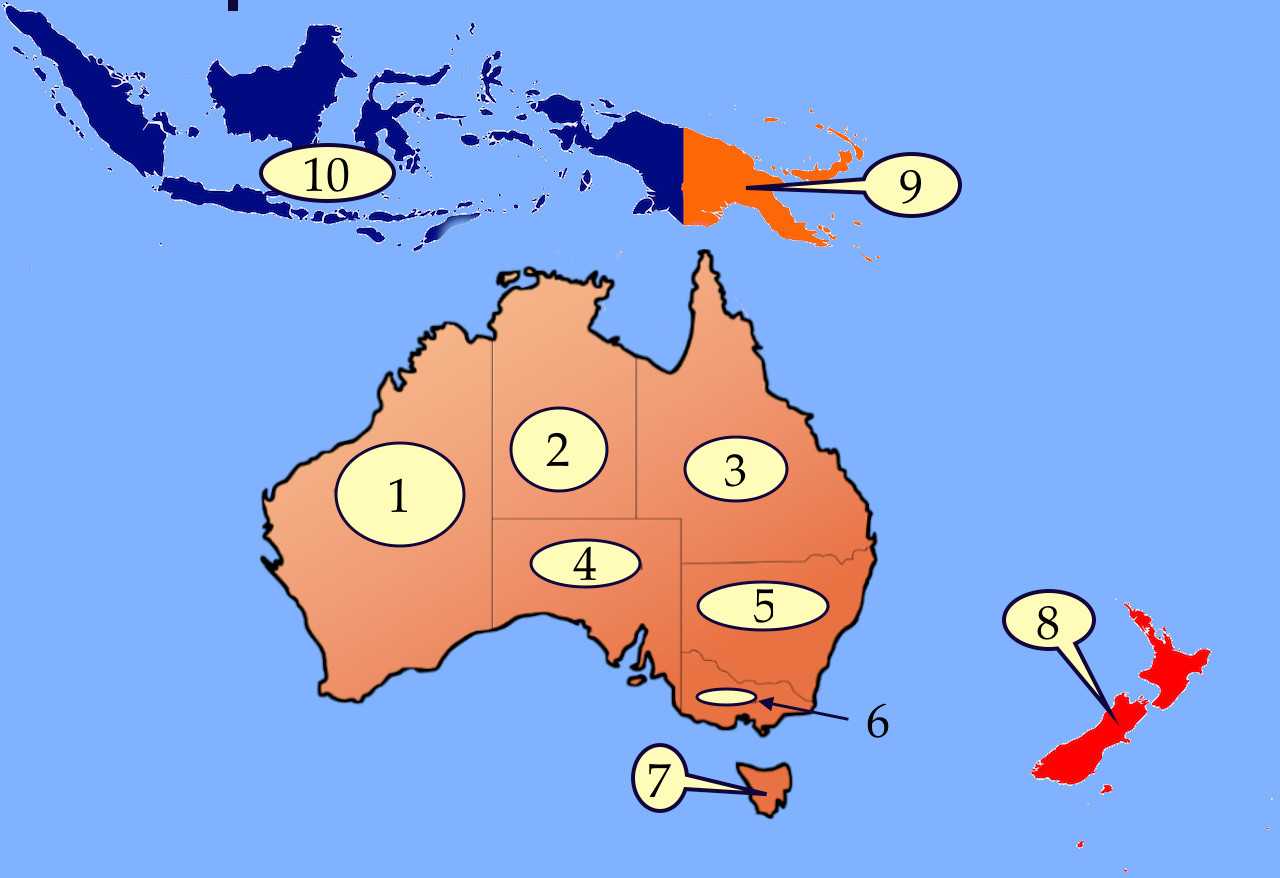
Mapping Australia Trivia Quiz
Test your knowledge of Australia and its nearest neighbors by putting the correct labels on the map. Includes six states, one mainland territory, and three nearby countries. Good luck.
A label quiz
by gracious1.
Estimated time: 3 mins.
- Home
- »
- Quizzes
- »
- Geography Trivia
- »
- Australia
